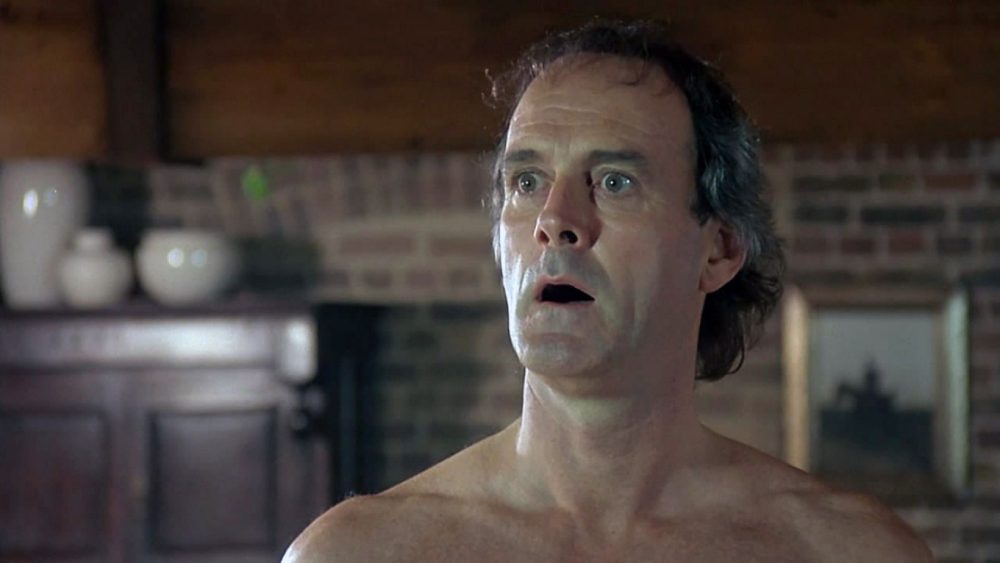
If you’re going to pair up two Brian De Palma erotic thrillers, nine times out of ten you’d go for Dressed to Kill and Body Double. Upon recently revisiting De Palma’s canon for the umpteenth time, however, I found a better pairing: Femme Fatale and Passion. Made ten years apart these two films showcase a late-career De Palma returning to the genre he helped define with a newfound enthusiasm and experimentation.
Femme Fatale follows a jewel thief (Rebecca Romijn-Stamos) who double-crosses her partners and adopts a new identity in Paris while Passion is set in the cut-throat world of advertising where two colleagues (Noomi Rapace, Rachel McAdams) develop an infatuation with one other that eventually mutates into a deadly rivalry. Both films were scripted by De Palma (though Passion is an adaptation of a previous French film) with Femme Fatale being his first original screenplay in ten years, since 1992’s Raising Cain. It should come as no surprise then that the two movies are deeply De Palma-esque. Lust, betrayal, sex, duality, dream logic and a heavy European tinge run throughout both pictures as does De Palma’s brazen craftsmanship behind the camera.
Femme Fatale kicks off with a showstopping 30 minute heist at the Cannes film festival in which Laure (Stamos), under the guise of a paparazzi photographer, must seduce a supermodel in order to switch and steal the priceless diamonds on her dress. It’s a ridiculous concept for a heist that somehow seems absolutely plausible in De Palma Land. The finished sequence is up there with the best things the filmmaker has ever done. Strangely enough, De Palma doesn’t mine the scene for tension. As it’s the beginning of the film, we don’t know enough about these characters to root for them, so the heist going awry isn’t really our concern. De Palma is more interested in the minutia of process rather than the threat of it going wrong. The whole thing is scored with classical music and is stretched to maximum length (it takes up a good quarter of the film’s running time) for full effect. Stamos’ extended seduction of the model also ensures the scene is more tuned to steaminess than suspense. De Palma is having fun here. Audiences love heists, audiences love playful eroticism, so he gives them exactly what they want with a cheeky wink.
As the film moves into it’s second act and introduces Antonio Banderas’ Nicolas Bardo, another photographer who becomes entwined with Laure years after the opening heist and threatens to expose her true identity, we see the return of De Palma’s trademark split-screen technique. It’s appropriate as the mid-section of Femme Fatale is a lot more complex than it initially appears, basically working on two levels. Without spoiling the details, De Palma utilizes dream imagery and subconscious logic heavily in both Femme Fatale and Passion. While the divide between reality and dream is clear by the end of Femme Fatale in Passion it is left much more obscure, maybe to a fault.
Dreams have been a big part of De Palma’s work from the beginning. Some of the most memorable scenes from Sisters, Carrie, The Fury and Dressed to Kill are nightmares occurring in the characters’ heads but it’s Raising Cain which best foreshadows what De Palma would explore with Passion and Femme Fatale. In that film, John Lithgow plays Cain, a psychologist suffering from multiple personality disorder and De Palma constantly shows us the world from Cain’s POV in each of his different guises making reality increasingly difficult to pin down. The same can be said for the final act of Passion. After being accused of murder, Isabelle (Rapace) appears to regress into her own consciousness. De Palma teases the audience with multiple fake outs and double fake outs, sometimes never clarifying what is real and what isn’t.
Passion‘s centerpiece, at least from a De Palma obsessive’s point of view, is an extended split screen sequence that intercuts a ballet performance with a stealthy murder in the giallo tradition and culminates with Isabelle jolting awake in her bed just as Christine (McAdams) has her throat slashed open. For a time, it isn’t clear if the previous scene really occurred or was just a variation of what actually transpired. From then on the film becomes hyper-real, bathed in expressionistic shadows and Dutch camera angles that are at odds stylistically with the film’s rather composed first hour. Even the story becomes excessively nonsensical with twist piling on after twist to the point of absurdity. The “it was all a dream” trope has become one of the most groan-worthy in cinema so De Palma’s commitment to it in both Passion and Femme Fatale is all the more daring and admirable. It’s as if he saw utilizing that twist as a challenge in itself and wanted to explore the possibilities. Perhaps if he was subtler about it audiences would have been more receptive (see Mulholland Dr.) but De Palma has never been about subtlety, which is actually one of things I respond to most in his work.
Both these films received a somewhat negative critical response upon release. Femme Fatale has undergone a bit of a reappraisal in the intervening years but with Passion that is yet to be seen. It’s ironic as the latter film stars two of the best actresses De Palma has ever worked with. No disrespect intended to Stamos and Banderas but the performances in Femme Fatale never outshine that of it’s director. McAdams and Rapace’s work in Passion are two of its strongest components and the two share an enjoyably steamy chemistry. It’s a testament to De Palma’s pull as a filmmaker that both actresses agreed to appear in such a lurid and sexually charged thriller. That isn’t to suggest it’s beneath them but consider that Passion is a remake of a little-seen french movie directed by a filmmaker many consider way past his prime and its status as a B-picture is hard to dispute. Passion didn’t receive a huge release and seems to have evaded most cinema-goers due to a practically non-existent marketing campaign, which is even more surprising considering the two headlining stars. Passion should have been De Palma’s comeback movie but with no directorial effort from him since, said comeback didn’t quite materialise. I think Passion is destined to be a film enjoyed most by De Palma completists as it certainly delivers everything you want from his work. As far as late-career throwbacks go, it’s strong and very characteristic of the same filmmaker who once gave us Body Double. Paired up with Femme Fatale, the two films paint a vivid picture of De Palma’s current obsessions as a storyteller. His use of structure is as adventurous as it’s ever been with greater emphasis on dreams instead of reality and presence of a Pino Donaggio score in both movies ensure they have the same aural personality as his more well-known thrillers. The two films even rhyme with one another in their depiction of same-sex power couples, dreamy diversions and French architecture. De Palma has always been a divisive filmmaker–too arty to be mainstream, too mainstream to be arthouse–and here are two leftfield picks from his filmography that showcase that division perfectly.
—
Both Femme Fatale and Passion are on home video and available for rental on the iTunes Store. Passion is currently streaming on Netflix. Both are very likely in the De Palma section of your local independant video store.



 Derek
Derek
 Isabelle
Isabelle